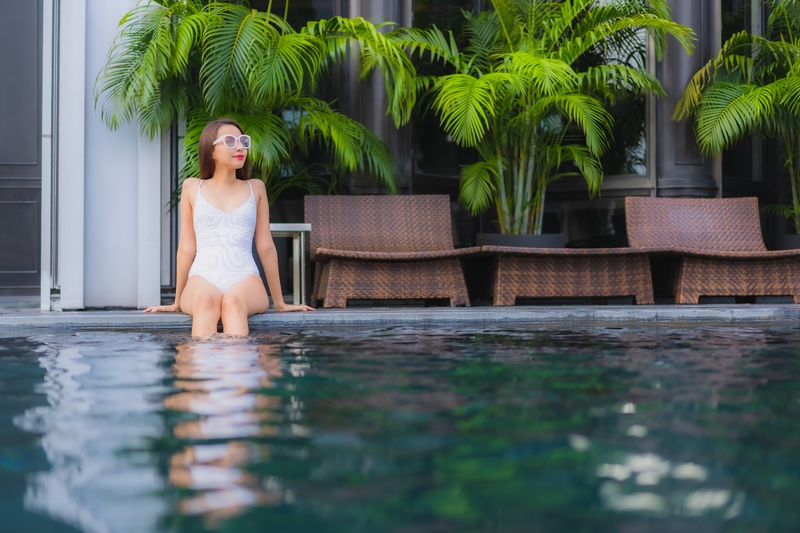When it comes to selling your home, first impressions matter more than most sellers realize. In fact, real estate studies consistently show that well-staged homes sell faster and for higher prices than homes that are empty, cluttered, or poorly presented.
But here’s the good news: you don’t need to hire an expensive staging company or spend thousands on new furniture to make your home shine. With a thoughtful plan, a bit of creativity, and a modest budget, you can stage your home beautifully and dramatically improve its appeal to buyers.
Whether you’re selling through a real estate agent or going For Sale By Owner (FSBO), these budget-friendly staging tips will help you showcase your property in its best light — and potentially boost your sale price.
🏡 Why Staging Matters More Than Ever
Buyers make decisions quickly. Most form an opinion of a home within the first 7 to 10 seconds of walking through the door — and those first impressions are hard to change. A staged home helps buyers:
- Visualize themselves living there
- Focus on the home’s features (not its flaws)
- Feel an emotional connection
- Perceive the property as well-maintained and “move-in ready”
Staging doesn’t just make your home look nicer — it increases perceived value. And in real estate, perception often drives price.
🧹 Step 1: Declutter Like a Minimalist
The most impactful (and affordable) staging step is also the simplest: declutter. Clutter distracts buyers, makes rooms feel smaller, and prevents them from imagining their own belongings in the space.
✅ Tips:
- Remove at least 30% of your belongings. This includes extra furniture, decor, and anything sitting on countertops.
- Pack up personal items. Family photos, collections, and keepsakes should go into storage — they remind buyers someone else lives here.
- Clear out closets and cabinets. Buyers will look inside, and organized storage spaces suggest a well-maintained home.
- Edit decor. Fewer, larger decor pieces often look more stylish and intentional than many small ones.
💡 Pro Tip: Decluttering is like a free square-footage upgrade. A cleaner, more open space automatically feels bigger and more valuable.
🧼 Step 2: Deep Clean Every Inch
Nothing turns buyers off faster than a dirty home. A spotless property signals that it’s been cared for — and buyers will often assume the rest of the house is equally well-maintained.
✅ Checklist:
- Scrub kitchens and bathrooms until they sparkle.
- Wash windows and mirrors to let in more light.
- Dust baseboards, light fixtures, ceiling fans, and vents.
- Steam clean carpets and polish hard floors.
- Eliminate odors — neutral, fresh scents sell.
💡 Pro Tip: Pay extra attention to small details like door handles, switch plates, and grout lines. These subtle touches make a home feel “newer.”
🛋️ Step 3: Rearrange Furniture for Flow and Space
You don’t need brand-new furniture to stage your home — you just need to arrange what you have strategically. The goal is to create a sense of openness, flow, and purpose in every room.
✅ Tips:
- Float furniture away from walls to make rooms feel larger.
- Create conversation areas in living spaces to suggest how the room can be used.
- Use scale wisely: Oversized furniture can make a space feel cramped; remove bulky pieces if necessary.
- Define spaces: Make sure each room has a clear purpose — no “miscellaneous” rooms.
💡 Pro Tip: Less is more. A few well-placed pieces can make a room look bigger and more inviting than a cluttered arrangement.
🎨 Step 4: Neutralize Colors and Style
Bold wall colors and highly personalized decor can distract buyers. A fresh, neutral palette makes it easier for them to imagine the home as their own — and it makes spaces feel brighter and more open.
✅ Tips:
- Repaint rooms in soft neutrals like warm white, light gray, or beige.
- Replace busy bedding or curtains with simple, clean designs.
- Limit bold artwork and patterns. Aim for a cohesive, understated look.
💡 Pro Tip: A can of paint is one of the most cost-effective upgrades you can make before selling. It instantly refreshes a space and can add thousands to perceived value.
🌿 Step 5: Add Light and Brightness
Natural light is one of the most sought-after features in any home — and you can make the most of it without spending much.
✅ Tips:
- Open curtains and blinds for maximum daylight.
- Replace outdated light fixtures with modern, affordable options.
- Use higher-wattage bulbs for a brighter, more welcoming feel.
- Add mirrors to reflect light and make rooms feel larger.
💡 Pro Tip: A bright home feels larger, cleaner, and more cheerful — all qualities that attract buyers and encourage stronger offers.
🌸 Step 6: Use Affordable Accessories Strategically
You don’t need expensive decor to make your home feel fresh and inviting. Small, inexpensive touches can have a big impact.
✅ Low-cost staging ideas:
- A bowl of fresh fruit on the kitchen counter
- Potted plants or a vase of fresh flowers
- A cozy throw blanket and accent pillows on the sofa
- Neutral, fluffy towels in the bathroom
- A new doormat or simple front porch decor
💡 Pro Tip: Aim for a balance between “lived-in” and “model home.” Too much personality can be distracting, but a few warm details create emotional appeal.
🚪 Step 7: Don’t Forget the Exterior (Curb Appeal Counts!)
Buyers often form their first impression before they even step inside. Boosting your home’s curb appeal doesn’t have to cost a fortune — but it pays off in perceived value.
✅ Tips:
- Mow the lawn and edge walkways.
- Trim bushes and remove weeds.
- Add fresh mulch and seasonal flowers.
- Paint or replace the front door if it’s worn.
- Power wash the driveway, siding, and sidewalks.
💡 Pro Tip: A welcoming exterior sets the tone for the entire showing. Even small updates can make your home feel more inviting and well-maintained.
🏡 Step 8: Stage “Lifestyle Moments”
Staging isn’t just about furniture — it’s about selling a lifestyle. A few thoughtful touches can help buyers imagine themselves living happily in the home.
✅ Ideas:
- Set the dining table with simple, elegant place settings.
- Add a tray with coffee mugs and a small plant on the kitchen counter.
- Create a cozy reading nook with a chair, lamp, and book.
- Stage the backyard with patio furniture to highlight outdoor living potential.
💡 Pro Tip: Buyers don’t just buy houses — they buy stories. Help them picture the story they could write in yours.
📋 Quick Room-by-Room Staging Checklist
Here’s a fast breakdown to keep you on track:
- Living Room: Bright, open, clutter-free, with inviting seating areas.
- Kitchen: Sparkling clean, countertops clear, minimal decor.
- Bedrooms: Neutral bedding, minimal furniture, organized closets.
- Bathrooms: Fresh towels, clean surfaces, no personal items visible.
- Entryway: Welcoming, uncluttered, with a focal point (like a plant or mirror).
- Outdoor Spaces: Tidy, inviting, and well-maintained.
🏁 Final Thoughts: Staging Is an Investment, Not an Expense
Staging doesn’t have to cost thousands — in fact, many of the most effective techniques are completely free. But even a small investment of time and money can yield a significant return.
A well-staged home feels bigger, brighter, cleaner, and more valuable — and that’s exactly what buyers are willing to pay for. Whether you’re rearranging furniture, adding fresh paint, or simply decluttering, each step brings you closer to a stronger first impression and a higher sale price.
Remember, staging isn’t about decorating — it’s about strategic presentation. And when done right, that strategy can make the difference between a quick sale at a great price and a long wait with disappointing offers.
✅ Final Tip: Think like a buyer. Walk through your home with fresh eyes — or even ask a friend to give honest feedback. If anything feels cluttered, dark, or too personal, that’s where to focus your staging efforts.


